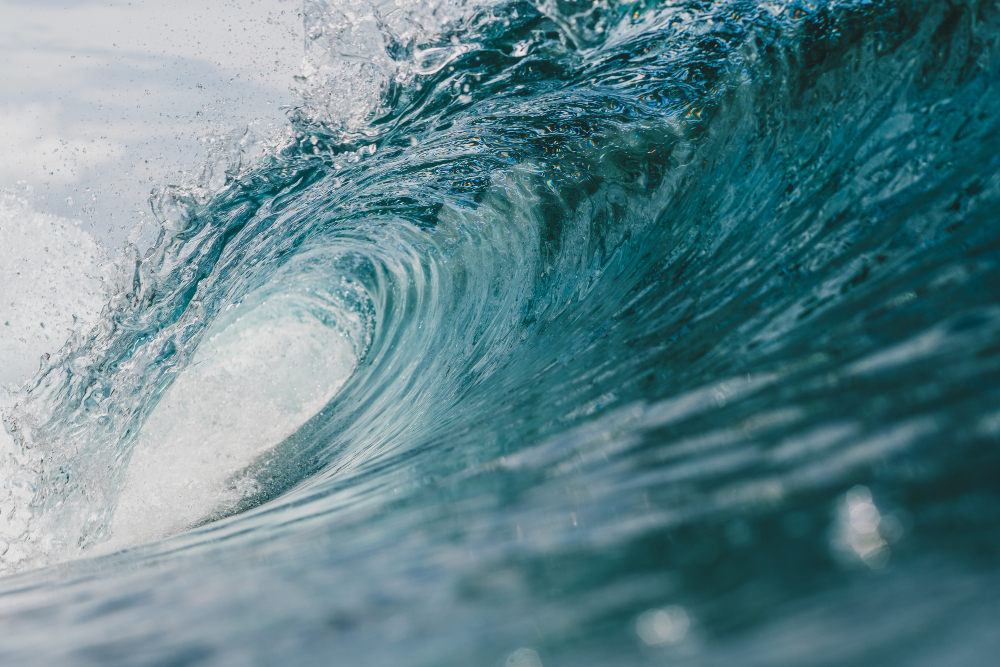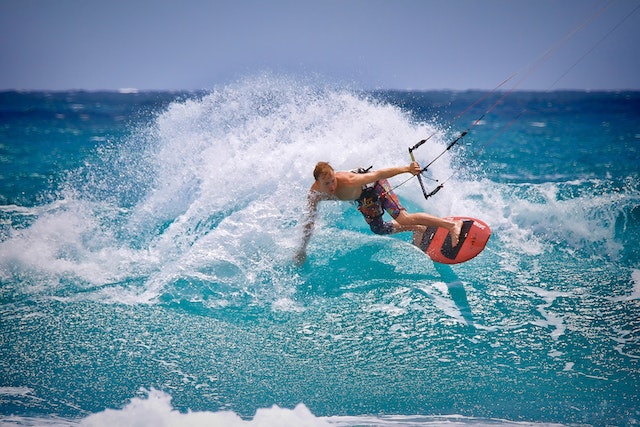Are you ready to embark on an exhilarating adventure that combines the beauty of the sea with the power of the wind? Wind surfing is a captivating water sport that offers an unmatched sense of freedom and excitement. If you’re new to this amazing activity, fear not! In this beginner’s guide, we will take you on a journey through the world of wind surfing, from its history and equipment to essential techniques and safety tips. Get ready to ride the waves like a pro and experience the ultimate joy of gliding on water.
Table of Contents
| Sr# | Headings |
|---|---|
| 1 | What is Wind Surfing? |
| 2 | The History of Wind Surfing |
| 3 | The Basics: Wind Surfing Equipment |
| 4 | Finding the Perfect Location |
| 5 | Wind Surfing Stance and Balance |
| 6 | Harnessing the Wind: Sailing Techniques |
| 7 | Steering and Turning on the Water |
| 8 | Catching and Riding the Waves |
| 9 | Wind Surfing Safety Measures |
| 10 | Tips for Improving Your Wind Surfing Skills |
| 11 | Embracing the Wind Surfing Lifestyle |
| 12 | Environmental Awareness in Wind Surfing |
1. What is Wind Surfing?
Imagine a perfect fusion of surfing and sailing, and you get wind surfing. It’s a dynamic water sport that involves riding on a board while being powered by the wind through a sail. The sail is attached to a movable mast, allowing the wind surfer to control their direction and speed, harnessing the power of nature to glide across the water’s surface.
2. The History of Wind Surfing
Wind surfing traces its roots back to the late 1960s and early 1970s when it first emerged as a recreational activity. The sport’s invention is credited to Jim Drake, a surfer, and Hoyle Schweitzer, a sailor, who collaborated to develop the prototype of the first wind surfboard. Over the years, wind surfing has evolved into a popular water sport, attracting thrill-seekers and water enthusiasts from around the globe.
3. The Basics: Wind Surfing Equipment
To get started with wind surfing, you’ll need the right equipment. Here’s a brief overview of the essential gear:
- Wind Surfboard: The board is the foundation of wind surfing, typically made of lightweight materials like foam or fiberglass.
- Mast and Sail: The sail is attached to the mast, which is fitted onto the board. It catches the wind and propels the wind surfer forward.
- Boom: The boom is the horizontal bar that connects to the sail, allowing the wind surfer to control its position.
- Wetsuit: A wetsuit is crucial for keeping you warm and protecting your skin from the water and sun.
4. Finding the Perfect Location
Choosing the right location is key to a successful wind surfing experience. Look for places with consistent wind patterns and calm waters. Lakes, bays, and coastal areas are ideal for beginners, as they provide a stable environment to practice your skills.
5. Wind Surfing Stance and Balance
Maintaining the correct stance and balance is essential in wind surfing. Keep your feet shoulder-width apart and your knees slightly bent to enhance stability. As you get comfortable on the board, you can adjust your stance depending on the wind conditions and maneuvers you want to perform.
6. Harnessing the Wind: Sailing Techniques
Understanding the wind’s behavior is fundamental in wind surfing. Positioning your sail to catch the wind effectively is crucial for propelling forward. Learn to read the wind direction and adjust the sail angle accordingly to maximize your speed and control.
7. Steering and Turning on the Water
Mastering the art of steering and turning will give you full control over your wind surfboard. Use the wind to your advantage, and learn different techniques to make smooth and precise turns. With practice, you’ll be gliding through the water with confidence.
8. Catching and Riding the Waves
One of the most exhilarating aspects of wind surfing is riding the waves. Learn how to position yourself correctly, time your moves, and ride the waves like a pro. It’s a feeling of pure bliss that every wind surfer cherishes.
9. Wind Surfing Safety Measures
While wind surfing is thrilling, safety should always be a top priority. Here are some essential safety measures:
- Wear a Life Jacket: Always wear a life jacket to ensure your safety in case of any unexpected incidents.
- Practice in Safe Conditions: Avoid strong currents and extreme weather conditions when you’re still a beginner.
- Know Your Limits: Don’t attempt advanced maneuvers beyond your skill level.
10. Tips for Improving Your Wind Surfing Skills
Improvement comes with practice and dedication. Here are some tips to help you become a better wind surfer:
- Consistent Practice: Regular practice will build your skills and confidence.
- Seek Guidance: Take lessons from experienced instructors to learn proper techniques.
- Observe Others: Watch skilled wind surfers to learn from their movements and strategies.
- Experiment with Maneuvers: Don’t be afraid to try new maneuvers and push your limits.
11. Embracing the Wind Surfing Lifestyle
Wind surfing is not just a sport; it’s a lifestyle that connects you with nature and fellow wind surfers. Embrace the community, share experiences, and explore new windsurfing destinations. It’s more than just a hobby; it becomes a passion.
12. Environmental Awareness in Wind Surfing
As wind surfers, it’s our responsibility to protect the environment we love. Be mindful of your surroundings, avoid disturbing marine life, and always leave the beach clean. By practicing eco-friendly wind surfing, we contribute to preserving our oceans for future generations.
Conclusion
Congratulations! You’ve taken your first steps into the fascinating world of wind surfing. Embrace the thrill, the challenges, and the sheer joy of gliding on water. Remember, wind surfing is not just a sport; it’s a journey that will enrich your life and connect you with nature in a unique way.
FAQs
- Can I try wind surfing if I don’t know how to swim? Absolutely not. Knowing how to swim is a basic requirement for wind surfing to ensure your safety in case of any mishaps.
- What type of board is best for beginners? For beginners, it’s recommended to start with a wider and more stable board, known as a beginner or all-around board.
- Do I need to be physically fit to wind surf? While basic fitness is helpful, wind surfing is suitable for people of various fitness levels. As you progress, your strength and endurance will naturally improve.
- Is wind surfing an expensive sport to pursue? Like many sports, wind surfing can have initial costs for equipment. However, with proper care, your gear can last for years, making it a long-term investment.
- Can children learn wind surfing? Yes, children can learn wind surfing under proper supervision and with appropriate gear designed for their size and skill level.


